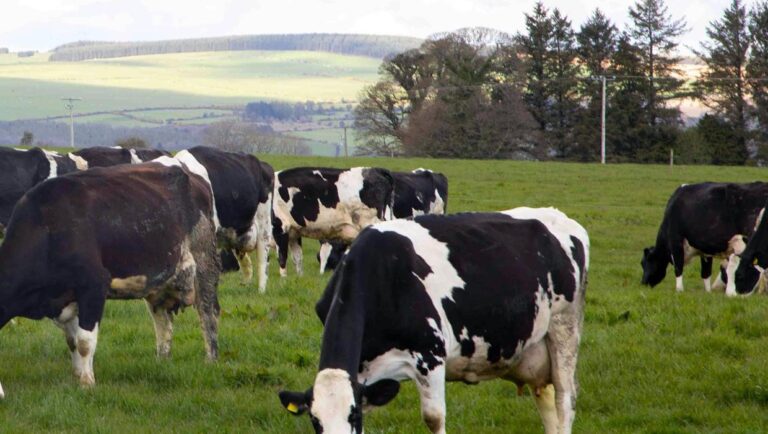The overall number of dairy cows in the national herd increased by 5,000 (0.3pc) to 1.51m between December 2021 and 2022, while the total number of cattle dropped by 1.5pc, new CSO figures show.
he figures show the total number of cattle aged one to two years grew by 34,500 (2pc) while cattle aged two years and over (excluding cows and bulls) rose by 5,200 (1.6pc).
The number of bulls used only for breeding declined by 2pc and now stands at 46,200, the figures show.
Male cattle over two years of age saw the highest increase, jumping by 12.6pc from December 2021 while female cattle over the age of two saw a decrease of 3.7pc.
The number of male and female cattle under the age of one decreased by 1.1pc and 2.6pc respectively.
The total number of pigs in the country fell by 8.4pc in the same time period to 1.57 million, its lowest level since 2016.
The numbers of both breeding pigs and non-breeding pigs dropped by 12.6pc and 8.0pc respectively with the largest drop in the ‘non-breeding pigs less than 20 kg’ category which was down 63,800.
The number of breeding pigs in Ireland is now at its lowest level in over 30 years and stands at 127,500, according to the CSO.
The increase in dairy cow numbers comes as the Minister for Agriculture Charlie McConalogue last month said a voluntary reduction scheme for dairy farmers had the support of members of the Food Vision Dairy Group and if such a scheme comes into place, 2022 will be the reference year.
“There was a recommendation which had the support of a number of stakeholders from the Food Vision Dairy Group in relation to the potential for a dairy reduction scheme,” he said, speaking at the IFA AGM.
“I have already clarified my position in relation to a suckler reduction scheme. Farm bodies and the industry have been crystal clear in their opposition to this concept. Therefore, I do not intend to proceed with it.”
If a reduction scheme was to be rolled out for dairy farmers, the Minister said he doesn’t want “unintended consequences” whereby people are preparing for a potential scheme by increasing their livestock numbers further.

